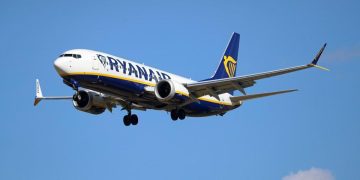The use of technological tools in catering is certainly not a novelty of recent times. It developed mainly in the fast-food sector precisely to respond to the demand for speed. However, now the digital transformation has also become part of luxury catering.
It must be considered that now the world of catering (including luxury) is saturated with offers regarding the opening of new places with offers of all kinds and varied culinary proposals. The customer is looking for more and more quality and novelty and is increasingly selective. In fact, the typical customer pays attention not only to what he will eat, but also on how he will eat it, how he will be received, how the service will be, how the dishes will be prepared and presented.
Therefore, the tendency towards competition among restaurants and the need to diversify the service offered, have given a push towards technology also in the luxury sector and created new methods for customer loyalty. This is realized with choices made by the chefs in order to create a technological structure that allows them to intercept and satisfy the needs of customers, offering them a satisfying experience even before entering the restaurant. All these factors become crucial since over time they allow obtaining important and prestigious awards, such as Michelin star, one of the major symbols of excellence in the luxury catering sector. But what are Michelin Stars? Michelin Stars are a badge of honor, a hallmark of fine dining and they are assigned by anonymous Michelin inspectors to restaurants which are judged to be of high standard and which offer outstanding cooking. Restaurants can be awarded one, two or more stars, following a specific rating system and then, Michelin publishes annual guides annually the Michelin Guide which includes the best restaurants awarded. But how is technology implemented in the luxury catering and why it is so important?
Technological tools used in luxury catering
Surely a particularly useful tool that has been introduced in even luxury catering is inventory management in electronic or digital mode. This allows companies to continuously monitor stock levels, control storage times of raw materials, manage orders efficiently, identifying timing and demand trends.
The use of QR codes is also proving to be an excellent tool to make the customer free to choose and to explore the menu independently, in some cases even by placing the order directly from their smartphone; or to access various insights on topics that may be of interest to the customer about the nutritional information of the dishes offered or the preparation processes (think for example of the list of allergens.
The importance to communicate with the chef
One of the most used tools is the POS system which, coupled with the use of software, allows you to offer a service ranging from booking to payment with diversified and innovative methods. This is joined by the introduction of technology also in the kitchen: in fact, orders taken by computerized staff (using tablets and PDAs) are increasingly arriving directly to the cooks on digital screens.
This allows for superior readability and a lot of information can be viewed in real time by kitchen operators. All this makes it possible to automate the communication between dining room and kitchen, significantly reduce the margin of error in orders, reduce waiting times and offer greater freedom of choice to customers.
Company Details:
Company name: Elemaca SRL
Country: Italy
VAT: 01329130775
Address: Largo Sant’Uberto snc, Policoro, MT, 75025, Italy


























